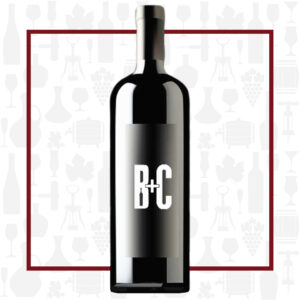Cellar Profile
In the mid 1700s, Bernardin Charrère moved from the Haute Savoie in Southeast France to the Aosta Valley and established Les Crêtes, a mill and farm in Aymavilles. This was in the middle of the 21 square mile Aosta Valley, in the heart of the wine region. In 1810, the family planted 2 hectares of vinifera grapes and the winery was born. The family still continues to craft wines from those vineyards to this day. Consistently recognized as the finest producer in the region, this is a boutique estate by international standards, but the largest privately-owned winery in Val d’Aosta. Working with the Italian government and other tiny vignerons in the region, Les Crêtes has been a pioneer in searching out rare, indigenous vinifera varieties — grapes like Petit Rouge, Mayolet, Prie Blanc, Premetta and Fumin, which exist nowhere else in the world — and helping protect them from extinction. This is one of the most challenging regions on earth to work for wine, with noncontiguous vineyards frequently planted on ledges on the side of steep Alpine mountains where they can find a little sandy soil. Hot summer days and extremely cool nights, coupled with a dry growing season allow for some of the longest hang times on earth. Their wines are powerful yet elegant, with trademark salty minerality – a true representation of this unique Alpine terroir.
Region
Surrounded by the Alps, the Valle d’Aosta is home to the highest elevated vineyards in all of Europe. The region is divided into three main vineyard areas: the upper valley,Valdigne; the central valley; and the lower valley. Most vineyards in the Aosta Valley occupy the steep, south-facing slopes above the Dora Baltea river, a tributary of the Po. The dramatic topography and diminutive size of the valley mean that the area available for viticulture is limited. Much of the valley floor, with its mineral-rich, well-watered soils, is simply too fertile for quality viticulture. As a result, most of the best vineyards here are on the lower slopes, and climb steadily up to top altitudes of around 1300m above sea level.
Vineyard
The Coteau la Tour Vineyard was so named for the ruins of an old watchtower that overlooks the ancient Savoy castle at Sarre. The vineyard is planted on a hill in the middle of the Upper Valley (Valdigne) that is completely encircled by rows of vines.
Varieties
Syrah is grown throughout the world, producing beautifully diverse and interesting wines. Syrah was found to be the offspring of two obscure grapes from southeastern France, Dureza and Mondeuse Blanche. The style and flavour profile of Syrah is greatly influenced by the climate in which the grapes are grown. Moderate climates, such as the northern Rhône Valley and parts of the Walla Walla AVA in Washington State, tend to produce medium- to full-bodied wines with medium to high levels of tannins and notes of blackberry, mint and black pepper. In hot climates, Syrah is more consistently full-bodied with softer tannin, jammier fruit and spice notes of licorice, anise and earthy leather. In cooler climates like the Val d’Aosta, care must be given to allow plenty of daytime sun to allow ripening before the cool evenings arrive.
Winemaking
Hand-harvested from the stunning Coteau la Tour vineyard, the grapes are transported and crushed during the cool evening and early morning hour. After the long, slow fermentation at temperature control in stainless steel, the wine receives nine months of aging in French oak barriques before bottling.
Tasting Notes
More Rhône-inspired than New World “Shiraz”, what this wine lacks in alcoholic punching power it makes up for in complexity and depth. Aromas of blackberry, cassis, white pepper, violets and plum. Flavours of black cherry, blackberry, minerality, cocoa and baking spice are framed by balancing acidity and a generous amount of tannic structure. Serve at cellar temperature with grilled lamb chops, brisket or mushroom stuffed ravioli.

 info@buyersandcellars.ca
www.buyersandcellars.ca
info@buyersandcellars.ca
www.buyersandcellars.ca